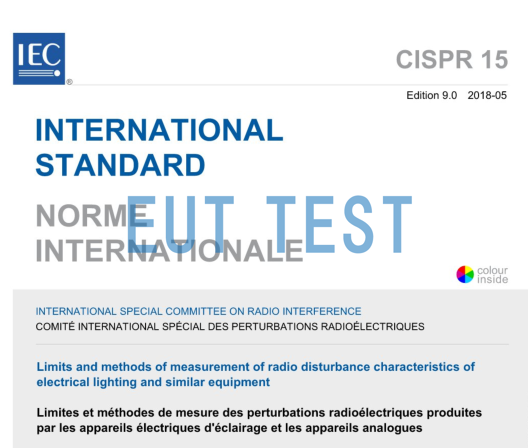Introduction:
This paper introduces the difference between two different coupling networks, CDN and CDNE, and describes in detail the requirements of EN55015, CISPR15, GB/T17743 standards on the technical parameters of the CDNE and the layout of the CDNE test method, and finally gives the common mode impedance, differential mode impedance, voltage division coefficient, decoupling, attenuation and other technical parameter diagrams of the CDNE M2 and CDNE M3 in line with the requirements of the two standards. Finally, the common mode impedance, differential mode impedance, voltage dividing factor, decoupling and attenuation of CDNE M2 and CDNE M3 are shown.
Difference between CDN and CDNE:
- The CDN can be used to measure radiated emission alternatives to older versions of the CISPR15 standard as well as conducted immunity tests;
- And CDNE can be used in the new version of CISPR15-2018 standard for radiated emission alternative test methods.
- Unlike the coupling/decoupling network (CDN) described in IEC/EN61000-4-6, the CDNE coupling and decoupling network is made specifically for measuring RF interference in luminaires, so the CDNE cannot be used for IEC/EN61000-4-6 immunity testing.
- The EN55015 and CISPR15-2018 standards have higher tolerance requirements for the asymmetric impedance-common-mode impedance of CDNE.
- The tolerance of the voltage divider coefficient is now defined over the entire frequency range, and the symmetrical impedance-differential mode impedance of the CDNE is required over the frequency range of 30 MHz-300 MHz.
Click to learn more about:Difference between CDN and CDNE
CDNE Source:
CDNE and CDN were previously used as an alternative method for radiated emissions in the range of 30MHz-300MHz. The latest standard CISPR15-2018 stipulates that the following counterpart methods can be used for the radiated emission test methods of 9KHz-1GHz for lamps and lanterns products.
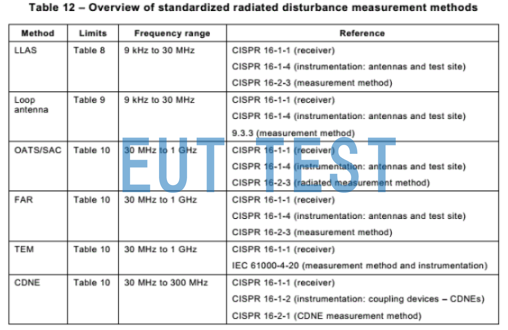
Form 12 CISPR15-2018 List of radiated emission test methods
CDNE test method:
According to Section 9 of the standard CISPR 16-2-1-2017 referred to in Form 12 describes the CDNE test method requirements as follows:
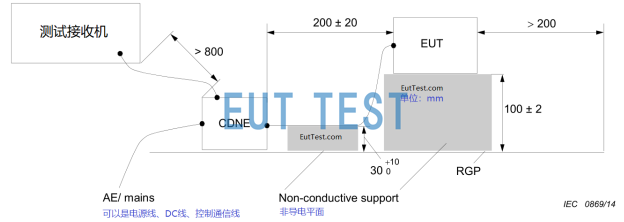
Figure 1: CDNE test method for 1 type of cable
The EUT is normally placed on a 10cm high insulated table, the distance between the EUT and the CDNE is 20cm, and the height of the cable is 3cm.
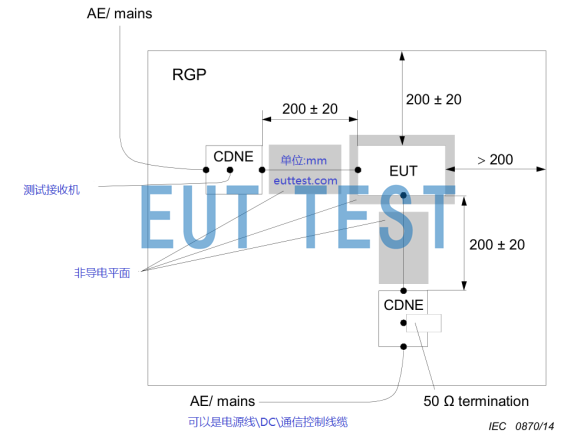
Figure 2: CDNE test method for two types of cables on adjacent surfaces
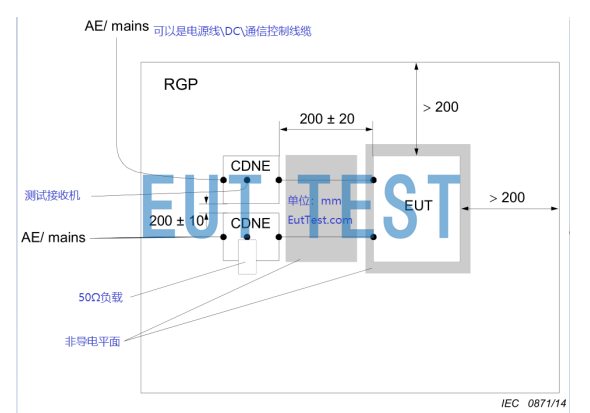
Figure 3: CDNE test method for two cables on the same face
Summary: As can be seen from the above, if the product under test EUT has only one kind of cable, such as the power line, only one CDNE is needed; if the EUT works normally with the power line and control or communication cables, it is necessary to add another CDNE to the cable that is not under test, and the output of this CDNE is connected to a 50Ω termination load in order to carry out the test. So you need to configure the number of CDNE according to the demand.
As you can also see from the picture, the test desktop is consistent with the old version of the standard and the test requirements for CDNs in GB17743-2017 and does not need to be replaced.
CISPR15 and EN55015 requirements for the technical parameters of CDNE:
According to Form 12 mentioned in section 1 above and section 9 of the standard CISPR16-1-2-2017 says that the technical requirements for CDNE are specified as shown in the table below:
<<<<提醒:左右滑动表格>>>>| Indicators that the CDNE should meet: | Type of equipment CDNE-M2 CDNE-M3 | Type of equipment CDNE-Sx |
| Common mode impedance of the EUT port | Phase angle 0° ± 25° | Phase angle 0° ± 25° |
| Differential mode impedance of the EUT port | 1 00 Ω ± 20 Ω | undefined |
| LCL Longitudinal Conversion Loss | ≥ 20 dB | undefined |
| CDNE Voltage divider accuracy | ± 1.5 dB | ± 1.5 dB |
| decoupling attenuation | > 30 dB | > 30 dB |
CDNE test equipment recommendations in compliance with CISPR15-2018:
We offer the following different types of CDNE for CISPR15-2018 testing for the latest standards:
- CDNE-M2: DC power cord control port for two-wire, unshielded power cord products that can be measured according to CISPR15-2018.
- CDNE-M3: DC power cord control port for 3-wire unshielded power cord products that can be measured according to CISPR15-2018.
If you need to test an older version of the GB17743 standard, before CDNE was used, the standard requirement was to use a different kind of CDN coupling decoupling networkPerforms radiated emission testing in the 30MHz-300MHz band.
4.1. Common mode impedance of CDNE complying with standard requirements
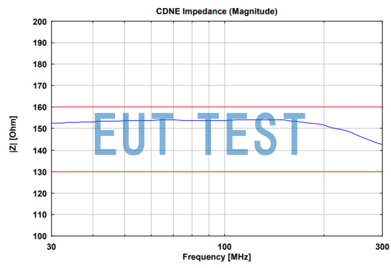
CDNE-M2 and CDNE-M3 with 150Ω common mode impedance
4.2. Differential mode impedance of CDNE in accordance with standard requirements
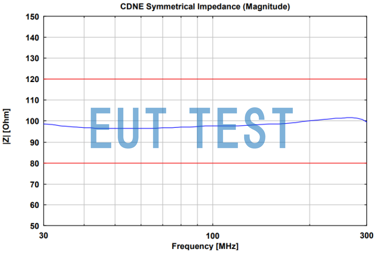
CDNE-M2 and CDNE-M3 with 100Ω differential mode impedance
3.3. Voltage dividing factor for CDNE in accordance with standard requirements

CDNE-M2 and CDNE-M3 with 30dB divider factor
3.4 Decoupling attenuation of CDNE in compliance with standard requirements
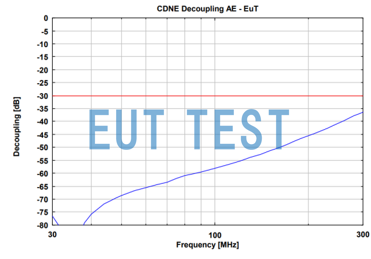
CDNE-M2 and CDNE-M3 with decoupling attenuation >30dB
Related Article:
IEC 61000-3-2 2018 Harmonic Testing Standard Update Latest Edition: updated November 2024

